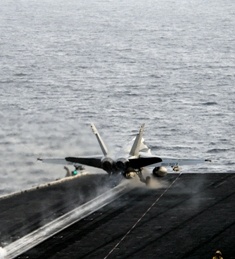| Table Row (tr) |
|---|
| | Table Cell (td) |
|---|
Introduction to the ModelDescription and AssumptionsThis model is applicable to a single point particle moving in one dimension either because it is physically constrained to move that way or because only one Cartesian component is considered. The force, or component of force along this direction, must be constant in time. The force can be in the same direction of motion or in the opposite direction of motion. Equivalently, the model applies to objects moving in one-dimension which have a position versus time graph that is parabolic and a velocity versus time graph that is linear. It is a subclass of the One-Dimensional Motion (General) model defined by the constraint da/dt = 0 (i.e. |
|
}{composition-setup}
{excerpt:hidden=true}{*}System:* One [point particle] moving in one dimension either because it's constrained to move that way or because only one Cartesian component is considered. --- *Interactions:* Constant force (in magnitude or in its component along the axis). {excerpt}
{table:cellspacing=0|cellpadding=8|border=1|frame=void|rules=cols}
{tr:valign=top}
{td}
h4. Introduction to the Model
h5. Description and Assumptions
This model is applicable to a single [point particle] moving in one dimension either because it is physically constrained to move that way or because only one Cartesian component is considered. The [force], or component of force along this direction, must be constant in time. The [force] can be in the same direction of motion or in the opposite direction of motion. Equivalently, the model applies to objects moving in one-dimension which have a [position versus time graph] that is parabolic and a [velocity versus time graph] that is linear. It is a subclass of the [One-Dimensional Motion (General)|One-Dimensional Motion (General)] model defined by the constraint da/dt = 0 (i.e.
{info} [] [] [|system] __ [ ] [] {info}
h5. Learning Objectives
Students will be assumed to understand this model who can:
* Explain the difference between how physicists use the term [acceleration] versus the everyday use of the terms "accelerate" and "decelerate".
* Describe the features of a [motion diagram] representing an object moving with constant [acceleration].
* Summarize the givens needed to solve a problem involving motion with constant [acceleration].
* Construct a consistent sign convention for the initial velocity, the final velocity and the acceleration in the case of objects that are speeding up or slowing down.
* Describe the features of a [position versus time graph] representing an object moving with constant [acceleration].
* Given a [position versus time graph], determine whether the object represented is speeding up or slowing down.
* Given a linear [velocity versus time graph], determine the corresponding [acceleration].
* State the equation that relates [position], initial [velocity], [acceleration] and time for motion with constant [acceleration].
* State the equation that relates [position], initial [velocity], final [velocity] and [acceleration] for motion with constant [acceleration].
* Solve a quadratic equation for time.
* Mathematically solve for the meeting time and location of two objects moving with constant [acceleration] by setting up and solving a system of equations.
* Graphically locate the meeting point of two objects moving with constant [acceleration].
* Describe the trajectory of a [projectile].
* Describe the acceleration of a [projectile] throughout its trajectory.
* State the conditions on the [velocity] and [acceleration] that describe the maximum height of a [projectile].
h4. S.I.M. Structure of the Model
h5. Compatible Systems
A single [point particle|point particle], or a [system] such as a single [rigid body] or a grouping of many bodies that is _treated_ as a [point particle] with [position] specified by the system's [center of mass].
h5. Relevant Interactions
Some constant net [external force] must be present to cause motion with a constant [acceleration].
h4. Laws of Change
h5. Mathematical Representations
This model has several mathematical realizations that involve different combinations of the variables for position, velocity, and acceleration.
\\
{math}Learning ObjectivesStudents will be assumed to understand this model who can: S.I.M. Structure of the ModelCompatible SystemsA single point particle, or a system such as a single rigid body or a grouping of many bodies that is treated as a point particle with position specified by the system's center of mass. Relevant InteractionsSome constant net external force must be present to cause motion with a constant acceleration. Laws of ChangeMathematical RepresentationsThis model has several mathematical realizations that involve different combinations of the variables for position, velocity, and acceleration.
| Latex |
|---|
\begin{large}\[v(t) =v_{i}+ a (t - t_{i})\]\end{ |
|
|
math\
mathlarge}\[x(t) = x_{i}+\frac{1}{2}(v_{f}+v_{i})(t - t_{i})\]\end{ |
|
|
math}
{math}
| Latex |
|---|
\begin{large}\[ x(t) = x_{i}+v_{i}(t-t_{i})+ \frac{1}{2}a(t-t_{i})^{2}\]\end{ |
|
|
math
{} {~}i~ {~}i~ {~}i~ {~}{~} note}
{math}large}\[v^{2}(x)= v_{i}^{2}+ 2 a (x - x_{i})\]\end{ |
|
|
math
{} {note}
h5. Diagrammatic Representations
* [motion diagram]
* [position versus time graph]
* [velocity versus time graph]
|[!images^MathematicaPlayer.png!|^ConstAccel.nbp]|[Click here|^ConstAccel.nbp] for a _Mathematica Player_ application illustrating these representations.|
|[!images^download_now.gif!|http://www.wolfram.com/products/player/download.cgi]|[Click here|http://www.woldfram.com/products/player/download.cgi] to download the (free) _Mathematica Player_ from [Wolfram Research|http://www.wolfram.com]|
h4. Relevant Examples
h6. {toggle-cloak:id=oned}Examples Involving Purely One-Dimensional Motion
{cloak:id=oned}
{contentbylabel:Diagrammatic RepresentationsRelevant Examples Examples Involving Purely One-Dimensional Motion | Cloak |
|---|
| | falsetruetrueAND501d_motion,constant_acceleration,example_problem |
|
|
|showSpace=false|showLabels=true|excerpt=true|operator=AND|maxResults=50}
{cloak}
h6. {:=}
{:=freefall}
{contentbylabel: | | falsetruetrueAND50freefall,example_problem |
|
|
|showSpace=false|showLabels=true|excerpt=true|operator=AND|maxResults=50}
{cloak}
h6. {:=}
{:=catchup}
{contentbylabel: | | falsetruetrueAND50catch-up,constant_acceleration,example_problem |
|
|
|showSpace=false|showLabels=true|excerpt=true|operator=AND|maxResults=50}
{cloak}
h6. {:=}
{:=all}
{contentbylabel: | | falsetruetrueAND50constant_acceleration,example_problem |
|
|
|showSpace=false|showLabels=true|excerpt=true|operator=AND|maxResults=50}
{cloak}
{td}
{td:width=235px}
!carrier.jpg!\\
\\ !bball.jpg|width=235!
Photos courtesy [US Navy|| Table Cell (td) |
|---|
|  Image Added Image Added
 Image Added Image Added
Photos courtesy US Navy by:
Cmdr. Jane Campbell
Mass Communication Specialist 1st Class Emmitt J. Hawks
|
|
|

